A few years ago, going to the doctor meant long waits, paperwork, and little access to quality care. But mHealth app development has changed this. Today, a smartphone can connect patients with healthcare providers instantly, monitor vital signs in real time, and even predict possible health problems.
This is changing the way we receive healthcare and increasing the demand for mHealthcare app development.
Therefore, businesses are investing in customized solutions and looking for reliable Healthcare app development companies. From remote patient monitoring to AI-driven diagnostics and telemedicine, these professionals ensure seamless, secure, and scalable solutions.
The global mHealth apps market size was estimated at USD 32.42 billion in 2023 and is anticipated to grow at a CAGR of 14.9% from 2024 to 2030.
mHealth app developers build intuitive applications that drive better patient outcomes, enhance operations, and enable better healthcare for people — no matter where they are.
So, let us discuss how mHealth app development is transforming the healthcare industry
What is mHealth?
Mobile Health (mHealth) includes providing healthcare services by using mobile devices, applications, and wireless technology. It allows patients to track their health, get medical advice, and manage treatments from anywhere.
MHealth app development is making healthcare more accessible with innovative solutions that vary from fitness tracking and telemedicine to AI-powered diagnostics.
Therefore, businesses are now looking for mHealth application development companies that build custom mHealth applications that improve patient care. To achieve this, mHealth app developers develop secure, robust, and user-friendly virtual health solutions for your organization.
Different Types of mHealth Applications
mHealth app development includes addressing healthcare issues with patient care solutions to support functions in the medical field. Depending on the target users and their needs, businesses can invest in mHealth app development for different mHealthcare apps. Some of these apps include:

Telemedicine Apps
Telemedicine apps allow an option to consult a doctor without long travel times or waiting hours. These applications connect patients and healthcare providers via video calls, voice chats, and AI-powered messaging for timely medical intervention.
These solutions play an important role for users living in rural, remote areas without hospitals or clinics. Patients no longer just share symptoms; they can upload medical reports and get an acute diagnosis without a physical visit.
Users can also use Telemedicine apps to get e-prescriptions for easier access to medications. More advanced apps even offer an AI-based symptom checker that helps patients to match with a doctor. Most healthcare providers and hospitals have started using these apps to reach out to their patients and offer remote healthcare services, increasing the efficiency and satisfaction level of the patients.
Target Audience:
- Patients in rural or underserved regions.
- Busy professionals preferring virtual consultations
- Hospitals and clinics are expanding their telehealth services.
Key Features:
- Secure video and voice consultations.
- AI Diagnostic Chatbots.
- Appointment booking & virtual waiting rooms.
- Electronic prescriptions and tracking medications.
- Encrypted patient-physician messaging system.
Remote Patient Monitoring (RPM)
These apps allow doctors to keep a check on patients’ vitals right from their office. These apps are for patients who need constant tracking of their health.
These applications synchronize with wearable devices and IoT sensors to monitor parameters like heart rate, blood pressure, oxygen levels, and blood glucose. The real-time health alerts are then sent to the doctors. As a result, they can intervene at an early stage if the patient starts showing signs of irregularities.
This helps in avoiding readmissions to hospitals and medical emergencies with advanced healthcare app development services. Moreover, RPM apps facilitate virtual healthcare where a caregiver monitors a patient’s health remotely. The analytical capabilities of these AI applications can track potential health risks based on the data collected from the patient. This allows doctors to make informed decisions. Furthermore, some apps also suggest tailored health recommendations for users to manage their conditions.
Target Audience:
- Elder people and high-risk patients.
- Healthcare providers offering home healthcare services
- Patients requiring constant monitoring.
Key Features:
- Health monitoring in real-time through IoT integration.
- AI-based predictive analytics for early risk detection.
- Alerts for abnormal vitals and emergency response.
- Remote doctor access to patient health reports.
- Data sharing between patients and providers in a secure manner.
Fitness and Wellness Apps
These apps allow users to track their physical activity, monitor their dietary habits, and access personalized workout programs or wellness plans to improve their overall health.
They can be used by fitness and health enthusiasts aiming to maintain a healthy lifestyle. Users can set fitness targets, track their daily steps, check calories burned, and guided workouts. Most of these apps can be synchronized with wearables such as smartwatches for real-time monitoring of parameters like heart rate and sleep.
Other features of these mHealth apps include AI-driven coaching, which modulates exercise routines as a user progresses. Further social features, such as fitness challenges and leaderboard rankings that allow users to compete among friends and enhance motivation.
Target Audience:
- Fitness enthusiasts and athletes
- Individuals looking to improve their overall health
- Personal trainers and wellness coaches
Key Features:
- Support for smart watches, fitness bands.
- Diet and workout suggestions powered by artificial intelligence.
- Gamification with challenges and community leaderboards
- Monitoring sleep and hydration for well-rounded wellness.
Medication Reminder Apps
Maintaining adherence to prescribed medications is a challenge, especially for elderly patients and those with multiple prescriptions. This problem is overcome by medication reminder apps that give time-to-time alerts for taking pills to ensure patients do not miss a dose. Such apps let users enter their prescriptions and set reminders to take their pills, as well as log their medication history. Some apps even sync with pharmacies to automate prescription refills, minimizing the chances of running out of key medicines.
Caregivers can also access these apps to monitor adherence and receive alerts when a patient misses a dose. These apps can be linked to smart devices, offering voice notes or vibrations on a wearable device for visually or hearing-impaired patients. These apps help prevent such complications and hospital visits for missed treatments by improving medication compliance.
Target Audience:
- Elderly individuals and patients with chronic illnesses
- Caregivers managing a loved one’s medications
- Conditions that need medication compliance.
Key Features:
- Customizable pill reminders with audio and visual alerts.
- Medication tracking and dosage logging.
- Partnering with pharmacies for automatic refills.
- Access for caregivers to monitor adherence.
- Smart notifications through voice assistants and wearables.
Mental Health and Therapy App
As mental health holds center stage, therapy and mental health apps are gaining popularity. These apps equip users with tools to cope with anxiety, stress, and depression.
Some AI-powered mood-tracking apps include guided meditation and mindfulness exercises to help improve users’ mental health. These apps also connect users with licensed therapists for virtual therapy sessions, creating wider access to professional mental health care.
Cognitive Behavioral Therapy (CBT)-based self-help programs in these apps assist users in developing coping skills. Likewise, anonymous support groups provide a safe peer space for conversation. Many mental health apps incorporate journaling and mood analysis features. This helps users log and analyze their emotions over time. By providing 24/7 access to mental health resources, these apps reduce the barriers for people seeking help without stigma.
Target Audience:
- People struggling with anxiety, depression, or stress problems.
- Therapists providing online therapy sessions.
- Companies promoting mental wellness for employees.
Key Features:
- Meditation and mindfulness exercises.
- Virtual therapy sessions with licensed professionals.
- AI-driven mood tracking and emotional analytics
- CBT-based self-help programs for mental resilience
- Forums for peer support and anonymous discussions.
Apps for Managing Chronic Disease
Chronic diseases such as diabetes, hypertension, and asthma require ongoing monitoring and lifestyle modifications, and chronic disease management apps make doing so easy.
These apps allow users to record what they are experiencing, monitor their vitals, and get AI-enhanced insights to manage their conditions more effectively. Doctors and healthcare providers can monitor a patient’s progress remotely and provide timely interventions.
Many apps sync with blood pressure monitors, glucose meters, and other medical devices to provide real-time data. This, in turn, decreases the need for repeated visits to the hospital. Personalized lifestyle recommendations guide users to make healthier choices, while automated alerts remind them to check vitals or take medications. Certain apps also link patients to online support communities, helping them stay motivated and providing emotional support.
Target Audience:
- Patients with chronic conditions requiring constant monitoring.
- Doctors managing long-term care for multiple patients
Key Features:
- AI health insights and symptom tracking.
- Real-time vitals monitoring – integrating with medical devices.
- Health data is used to provide personalized lifestyle recommendations.
- Doctor-patient messaging for remote consultation
- Public health emergency alerts for high-risk health situations.
Benefits of mHealth Apps
Investing in mHealth custom app development allows businesses to better tailor solutions for healthcare needs, resulting in better patient outcomes and healthcare services. Collaborating with seasoned mHealth app developers guarantees that these solutions are intuitive, secure, and compliant with healthcare regulations.
mHealth apps have played an important role in making healthcare services more accessible, efficient, and patient-centric. These apps improve the way healthcare is delivered, ranging from remote consultations to real-time healthcare monitoring. Let us look at some important advantages of custom mHealth app development, especially for businesses, healthcare providers, and patients.
Greater Access to Healthcare
mHealth apps facilitate remote consultations and reduce the need for face-to-face communication between patients and healthcare providers. Telemedicine solutions enable patients in rural and underserved populations to reach out to the doctor instantly. Such apps also guarantee round-the-clock access to healthcare resources anytime medical support is required. Basic health assessments are done for users even before they visit a doctor with AI-powered chatbots.
Improved Patient Engagement and Self-Management
It promotes the active involvement of users in their healthcare by offering real-time health monitoring, medication reminders, and wellness insights. They can track symptoms and fitness progress by following personalized recommendations. More engagement results in improved health outcomes and less reliance on emergency care. Gamification features, such as challenges and progress tracking, encourage users to stick to a healthy lifestyle.
Improved Management of Chronic Diseases
Managing chronic conditions is easier through continuous monitoring and data-driven insights. Patients can record their vitals, get AI predictions on health, and receive timely medical advice. Physicians can monitor patients’ progress remotely and modify treatments, which curtails hospital readmissions. Alerts and reminders help keep patients on track with medication adherence and prescribed lifestyle changes.
Savings for Patients and Healthcare Providers
mHealth apps save patients and providers money by reducing unnecessary hospital visits and travel expenses. Virtual consultations and remote patient monitoring help reduce in-person visits, thus reducing operational expenditures. AI-driven diagnostic tools and automated processes enable healthcare providers to serve more patients without incurring higher costs. Insurance companies benefit, too, since preventive measures lower claim costs.
Simplified Businesses for Medical Professionals
MHealth solutions enable doctors, nurses, and administrative personnel to manage patient records, appointments, and consultations. These apps are integrated with Electronic Health Records (EHR), which allows for instantaneous access to patient data, eliminating paperwork and administrative workload. Automated scheduling, electronic prescriptions, and secure messaging make interactions between the healthcare team and patients easier. AI-powered decision-support tools also help physicians make correct diagnoses more quickly.
Healthcare Decisions Based on Data
mHealth apps can capture a significant amount of patient health and wellness data to deliver a personalized treatment plan as per the analysis. Powered by AI, analytics identify trends and possible health concerns so that preemptive and preventive healthcare can save lives. This data can help health professionals optimize treatment user outcomes, advance research, and encourage better decision-making. Patients can receive AI-driven health recommendations based on their lifestyle and medical history.
How to Build an mHealth App?
Creating an mHealth app involves much more than writing code — it requires a strategic framework, adherence to healthcare legislation, and appropriate technologies. Whether developing an application for patients, doctors, or healthcare organizations, security, use, and scalability are essential when it comes to the use of technology and AI in healthcare. Here is a step-by-step process to help you develop a successful, user-friendly, and compliant mHealth application!
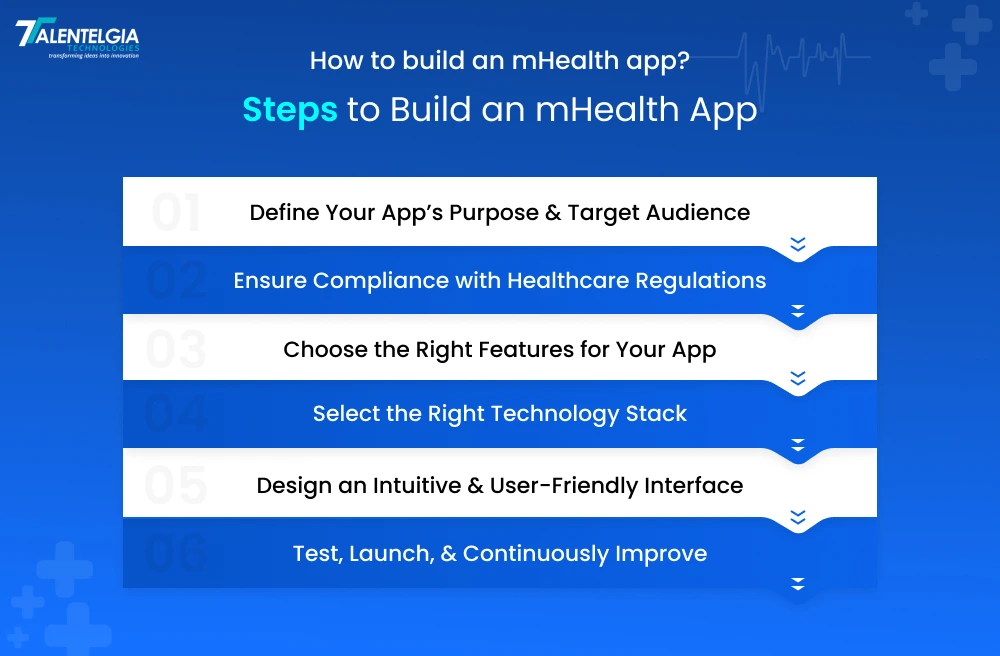
Step 1: Define the Purpose & Target Audience of Your App
Successful mHealth app development projects need a clear vision. Understanding what the app determines its core features, user experience, and the technical requirements. The next step is to define the target audience, i.e., whether the app is meant for patients, doctors or clinics, or fitness enthusiasts. This ensures that people using the app can find value in the app and also can find what they are looking for.
Key Considerations:
- Identify if your app is for telemedicine, fitness tracking, remote patient monitoring, etc.
- Define what problems your app can address (e.g., appointments, chronic disease management).
- Pick a platform (iOS, Android, cross-platform) based on user demographics.
💡 Tip: Conduct surveys or interviews with potential users to validate your app concept demand.
Step 2: Ensure Compliance with Healthcare Regulations
mHealth applications often process sensitive patient data, so compliance with the law is not optional. Ensuring data security and compliance with various regulations such as HIPAA (USA), GDPR (Europe), and PIPEDA (Canada).
Key Considerations:
- Use encryption to protect data.
- Enable secure logins (biometric logins, two-step logins).
- Follow region-specific healthcare laws to avoid legal issues.
💡Tip: Collaborate with mHealth app developers experienced in healthcare compliance to prevent expensive errors.
Step 3: Choose the Right Features for Your App
A clear feature listing is important for a smooth user experience. Start with basic functionality and then add to it as per the user feedback. Balancing functionality and simplicity gives better engagement and usability.
Key Features to Include:
- User registration & profiles for personalization.
- Service offerings & appointment & reminders to avoid missing consultations.
- Remote care via video consultations & telemedicine.
- Integration with Electronic Health Records (EHR) for accessing medical history.
- Real-time perspective with AI-driven analytics & health tracking.
💡Tip: Begin with a Minimum Viable Product (MVP) to define core competencies before expanding.
Step 4: Select the Right Technology Stack
An app’s performance, security, and scalability depend on the technology stack used. The framework, programming languages, and third-party integrations should be chosen carefully to ensure seamless functioning and scalability in the future.
Key Considerations:
- Front-end tech: React Native, Flutter (cross-platform), Swift (iOS), Kotlin (Android).
- Back-end technologies: Node. js, Java, or Python for API development.
- Cloud storage & database, Google Cloud, or Firebase for secure data management.
- APIs & integrations: HealthKit (iOS), Google Fit (Android), Stripe (payments).
💡 Tip: To select the most appropriate tech stack, define the requirements clearly or partner with an experienced mHealth app development company.
Step 5: Create a User-friendly & Intuitive Interface
Good UI/UX design allows the users, be they patients or doctors, to easily navigate through the app. These will help enhance usability and create an accessible, engaging, and visually pleasing experience.
Key Considerations:
- Use simple navigation that minimizes the cognitive load.
- Adopted typography and color schemes optimized for visibility.
- Optimize accessibility – include voice commands and screen readers.
- Include tutorials or guided steps for first-time users.
💡 Tip: Follow WCAG (Web Content Accessibility Guidelines) to ensure inclusivity for users with disabilities.
Step 6: Test, Launch, & Continuously Improve
Testing plays a vital role in identifying issues that your mHealth app might face before it reaches the market. Thus ensuring seamless performance and compliance with health regulations. After the app goes live, collecting user feedback and launching updates is crucial to keeping your app relevant.
Key Considerations:
- Test for security, functionality, and performance before deployment.
- Release a beta version to receive feedback from primary users.
- It is also important to release regular updates that focus on improving features and fixing issues.
💡 Tip: Implement A/B testing to refine UI/UX elements and optimize user experience.
Challenges in Developing mHealth Applications
mHealth app development mHealth app creation is a sophisticated process that needs a detailed knowledge of health places and regulations, technology, and user expectations. An experienced mHealth app development company helps you build a top-notch, future-proof app that caters to both your business and the healthcare industry.
So, it is important to resolve these issues to build an application that is robust, extensible, and legally compliant.
- Challenge: Data Security & Privacy
- Solution: Implement end-to-end encryption, HIPAA/GDPR compliance, and multi-factor authentication.
- Challenge: Meeting Regulatory Compliance
- Solution: Collaborate with legal professionals and mHealth app development specialists to ensure that your application aligns with healthcare regulations such as HIPAA, GDPR, and PIPEDA.
- Challenge: Integration into Existing Healthcare Frameworks
- Solution: Standardized APIs (FHIR, HL7) for seamless data exchange with EHR/EMR systems.
- Challenge: High Performance & Reliability
- Solution: Use cloud-based frameworks, load balancing, and routine stress testing to improve app performance.
- Challenge: User Adoption & Retention
- Solution: Design a user interface/user experience (ui/ux) that is user-friendly, create onboarding tutorials, and develop personalized user engagement functionality.
Emerging Trends in mHealth Technology
The mobileHealth (mHealth) ecosystem is changing due to the technological enhancements that are being adopted for patient care, making the operations more efficient. AI-powered diagnostics, wearables, and telemedicine are transforming service delivery. Here are five important trends shaping healthcare and mHealth app development.
AI in Healthcare
mHealth apps offer limitless benefits like smart diagnostics, personalized treatment recommendations, and predictive analytics. Machine learning algorithms analyze huge sets of data to identify trends, abnormalities, or patterns, enabling doctors to make quicker, more accurate decisions. AI-based chatbots and virtual health assistants enhance patient involvement by delivering real-time health analysis.
Use Case: AI-based symptom checkers, automated appointment bookers, and remote patient monitoring.
Telemedicine & Virtual Consultations
With the provision of remote healthcare services, telemedicine is adding to the capacity of mHealth. Patients can consult their doctors via video call, AI-powered chatbot, or text-based app instead of going to the hospital. This reduces hospital visits and maximizes their efficiency. The telemedicine apps are now providing latency-free high video consultations owing to the superfast 5G connectivity.
Use Case: Telemedicine consultations, mental health therapy apps, and post-surgery consultations.
Wearable Health Technology & Internet of Things Integration
Wearable devices (such as smartwatches, fitness bands, and biosensors, among others) have become increasingly sophisticated, capable of continuous health monitoring. They track heart rate, blood pressure, oxygen level, sleep schedule, and activity levels to encourage health awareness. The integration of IoT also syncs data in real time between their wearables and mHealth apps, resulting in accurate health monitoring.
Use Cases: Portable ECG monitoring, continuous glucose monitors for diabetes management, and remote patient tracking systems.
Blockchain for Data Security & Interoperability
In mHealth App Development, data security, transparency, and high data interoperability are being improved with blockchain technology. It allows for tamper-proof medical records and secure data exchange between healthcare providers. Blockchain decentralizes health data storage. This helps to prevent unauthorized access and cyber attacks while still meeting regulatory standards.
Use case: Secured EHR storage, encrypted sharing of patient data, prevention of fraud in insurance claims.
Augmented Reality (AR) & Virtual Reality (VR) in Healthcare
AR and VR applications are revolutionizing patient care, medical education, and rehabilitation in mHealth. Virtual reality (VR)-based therapy is being used for pain management, mental health treatments, and physical therapy, respectively. AR applications support surgeons with real-time overlays of key patient data during operations for better accuracy.
Use case: Treatment of anxiety and PTSD using VR, AR-assisted surgeries, and tools for immersive education of patients.
How Much Does mHealth App Development Cost?
Developing a healthcare mobile application involves various factors that influence the overall cost, including app complexity, platform choice, design requirements, and compliance with healthcare regulations. Understanding these elements is essential for effective budgeting and planning. Below is a general overview of estimated costs associated with custom mHealth app development.
| App Complexity | Estimated Cost Range | Description |
|---|---|---|
| Basic Healthcare App | $30,000 – $50,000 | Features user registration, appointment scheduling, and chat consultations. |
| Medium-Complexity App | $60,000 – $100,000 | Includes video consultations, prescription management, and payment integration. |
| Complex Healthcare App | $100,000 – $500,000 | Incorporates advanced functionalities like telemedicine, EHR integration, and real-time analytics. |
These estimates can vary based on additional factors, such as the development team’s location, with hourly rates ranging from $20 to $250. Investing in a well-designed, compliant, and user-friendly healthcare app is essential for delivering quality patient care and achieving long-term success.
Conclusion
mHealth App Development is evolving, allowing healthcare to be delivered more at home. With services like remote consultations, real-time health monitoring, and AI-powered diagnostics, tailor-made mHealth solutions provide businesses with a means to improve patient care and simplify processes.
However, building a high-performing mHealth app needs more than an idea. It requires a strategy that ensures regulatory compliance, user-friendly design, and advanced security measures for sensitive health data.
Digitalization of healthcare makes it the right time to invest in mHealth app development. Whether you are a healthcare provider, startup, or an enterprise entering into medical services, hiring a reliable mHealth app development company builds a solution that not only works but also scales with time and is compliant with industry standards.


 Healthcare App Development Services
Healthcare App Development Services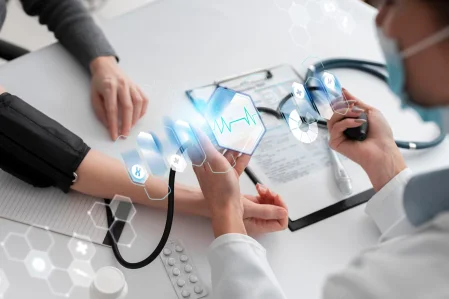
 Real Estate Web Development Services
Real Estate Web Development Services
 E-Commerce App Development Services
E-Commerce App Development Services E-Commerce Web Development Services
E-Commerce Web Development Services Blockchain E-commerce Development Company
Blockchain E-commerce Development Company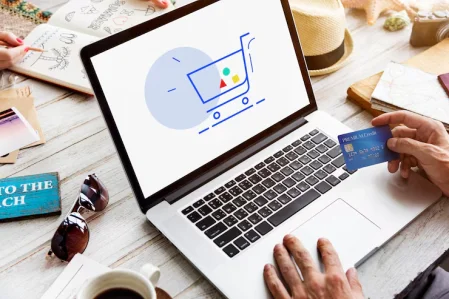
 Fintech App Development Services
Fintech App Development Services Fintech Web Development
Fintech Web Development Blockchain Fintech Development Company
Blockchain Fintech Development Company
 E-Learning App Development Services
E-Learning App Development Services
 Restaurant App Development Company
Restaurant App Development Company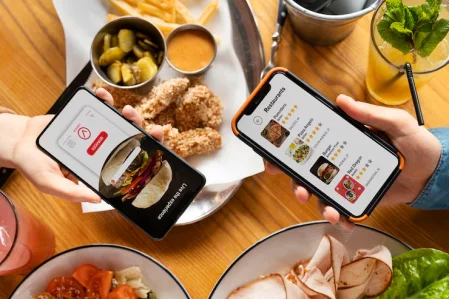
 Mobile Game Development Company
Mobile Game Development Company
 Travel App Development Company
Travel App Development Company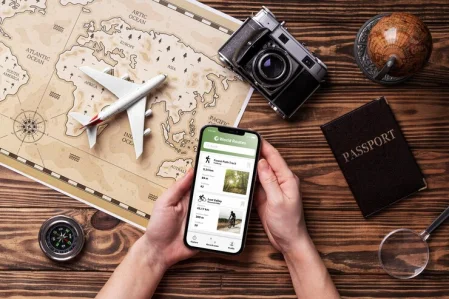
 Automotive Web Design
Automotive Web Design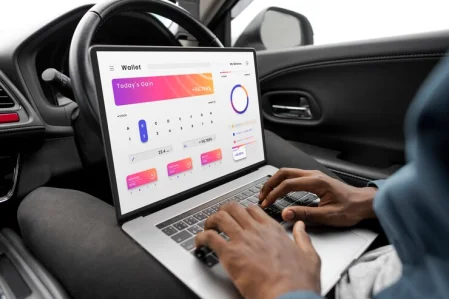
 AI Traffic Management System
AI Traffic Management System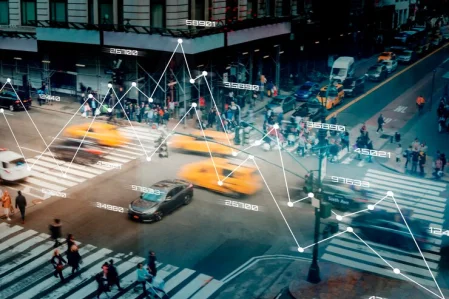
 AI Inventory Management Software
AI Inventory Management Software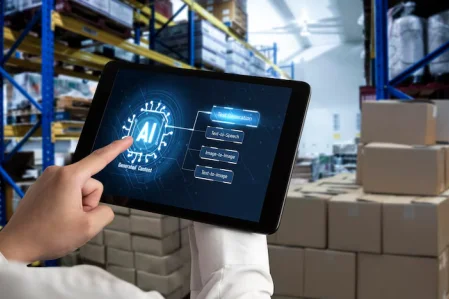
 AI Software Development
AI Software Development  AI Development Company
AI Development Company  AI App Development Services
AI App Development Services  ChatGPT integration services
ChatGPT integration services  AI Integration Services
AI Integration Services  Generative AI Development Services
Generative AI Development Services  Natural Language Processing Company
Natural Language Processing Company Machine Learning Development
Machine Learning Development  Machine learning consulting services
Machine learning consulting services  Blockchain Development
Blockchain Development  Blockchain Software Development
Blockchain Software Development  Smart Contract Development Company
Smart Contract Development Company  NFT Marketplace Development Services
NFT Marketplace Development Services  Asset Tokenization Company
Asset Tokenization Company DeFi Wallet Development Company
DeFi Wallet Development Company Mobile App Development
Mobile App Development  IOS App Development
IOS App Development  Android App Development
Android App Development  Cross-Platform App Development
Cross-Platform App Development  Augmented Reality (AR) App Development
Augmented Reality (AR) App Development  Virtual Reality (VR) App Development
Virtual Reality (VR) App Development  Web App Development
Web App Development  SaaS App Development
SaaS App Development Flutter
Flutter  React Native
React Native  Swift (IOS)
Swift (IOS)  Kotlin (Android)
Kotlin (Android)  Mean Stack Development
Mean Stack Development  AngularJS Development
AngularJS Development  MongoDB Development
MongoDB Development  Nodejs Development
Nodejs Development  Database Development
Database Development Ruby on Rails Development
Ruby on Rails Development Expressjs Development
Expressjs Development  Full Stack Development
Full Stack Development  Web Development Services
Web Development Services  Laravel Development
Laravel Development  LAMP Development
LAMP Development  Custom PHP Development
Custom PHP Development  .Net Development
.Net Development  User Experience Design Services
User Experience Design Services  User Interface Design Services
User Interface Design Services  Automated Testing
Automated Testing  Manual Testing
Manual Testing  Digital Marketing Services
Digital Marketing Services 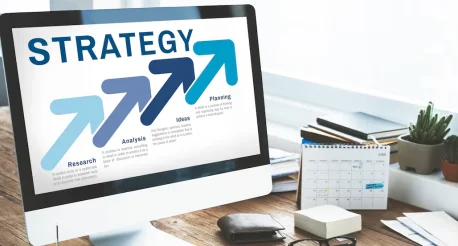
 Ride-Sharing And Taxi Services
Ride-Sharing And Taxi Services Food Delivery Services
Food Delivery Services Grocery Delivery Services
Grocery Delivery Services Transportation And Logistics
Transportation And Logistics Car Wash App
Car Wash App Home Services App
Home Services App ERP Development Services
ERP Development Services CMS Development Services
CMS Development Services LMS Development
LMS Development CRM Development
CRM Development DevOps Development Services
DevOps Development Services AI Business Solutions
AI Business Solutions AI Cloud Solutions
AI Cloud Solutions AI Chatbot Development
AI Chatbot Development API Development
API Development Blockchain Product Development
Blockchain Product Development Cryptocurrency Wallet Development
Cryptocurrency Wallet Development About Talentelgia
About Talentelgia  Our Team
Our Team  Our Culture
Our Culture 
 Healthcare App Development Services
Healthcare App Development Services Real Estate Web Development Services
Real Estate Web Development Services E-Commerce App Development Services
E-Commerce App Development Services E-Commerce Web Development Services
E-Commerce Web Development Services Blockchain E-commerce
Development Company
Blockchain E-commerce
Development Company Fintech App Development Services
Fintech App Development Services Finance Web Development
Finance Web Development Blockchain Fintech
Development Company
Blockchain Fintech
Development Company E-Learning App Development Services
E-Learning App Development Services Restaurant App Development Company
Restaurant App Development Company Mobile Game Development Company
Mobile Game Development Company Travel App Development Company
Travel App Development Company Automotive Web Design
Automotive Web Design AI Traffic Management System
AI Traffic Management System AI Inventory Management Software
AI Inventory Management Software AI Software Development
AI Software Development AI Development Company
AI Development Company ChatGPT integration services
ChatGPT integration services AI Integration Services
AI Integration Services Machine Learning Development
Machine Learning Development Machine learning consulting services
Machine learning consulting services Blockchain Development
Blockchain Development Blockchain Software Development
Blockchain Software Development Smart contract development company
Smart contract development company NFT marketplace development services
NFT marketplace development services IOS App Development
IOS App Development Android App Development
Android App Development Cross-Platform App Development
Cross-Platform App Development Augmented Reality (AR) App
Development
Augmented Reality (AR) App
Development Virtual Reality (VR) App Development
Virtual Reality (VR) App Development Web App Development
Web App Development Flutter
Flutter React
Native
React
Native Swift
(IOS)
Swift
(IOS) Kotlin (Android)
Kotlin (Android) MEAN Stack Development
MEAN Stack Development AngularJS Development
AngularJS Development MongoDB Development
MongoDB Development Nodejs Development
Nodejs Development Database development services
Database development services Ruby on Rails Development services
Ruby on Rails Development services Expressjs Development
Expressjs Development Full Stack Development
Full Stack Development Web Development Services
Web Development Services Laravel Development
Laravel Development LAMP
Development
LAMP
Development Custom PHP Development
Custom PHP Development User Experience Design Services
User Experience Design Services User Interface Design Services
User Interface Design Services Automated Testing
Automated Testing Manual
Testing
Manual
Testing About Talentelgia
About Talentelgia Our Team
Our Team Our Culture
Our Culture
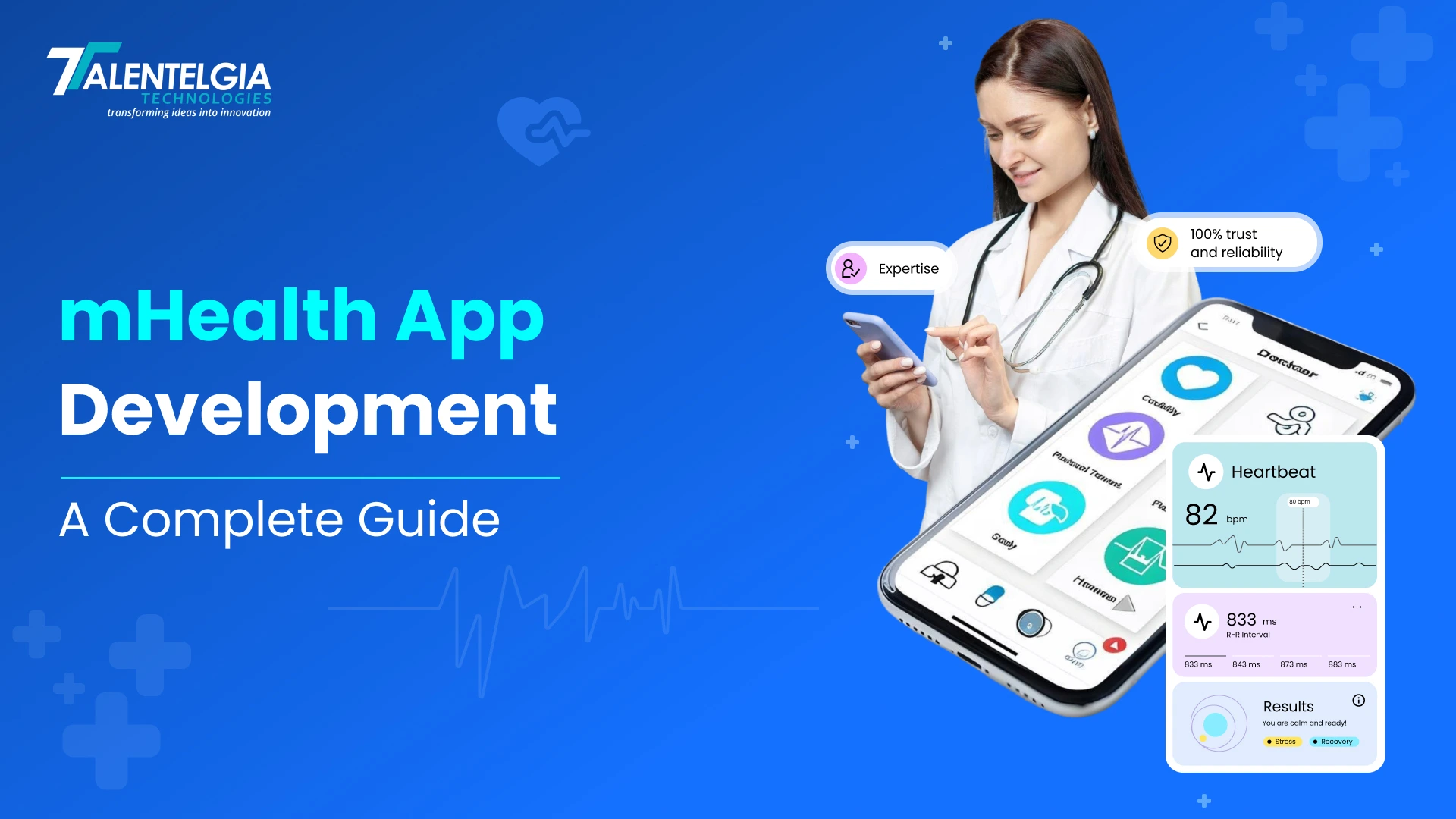

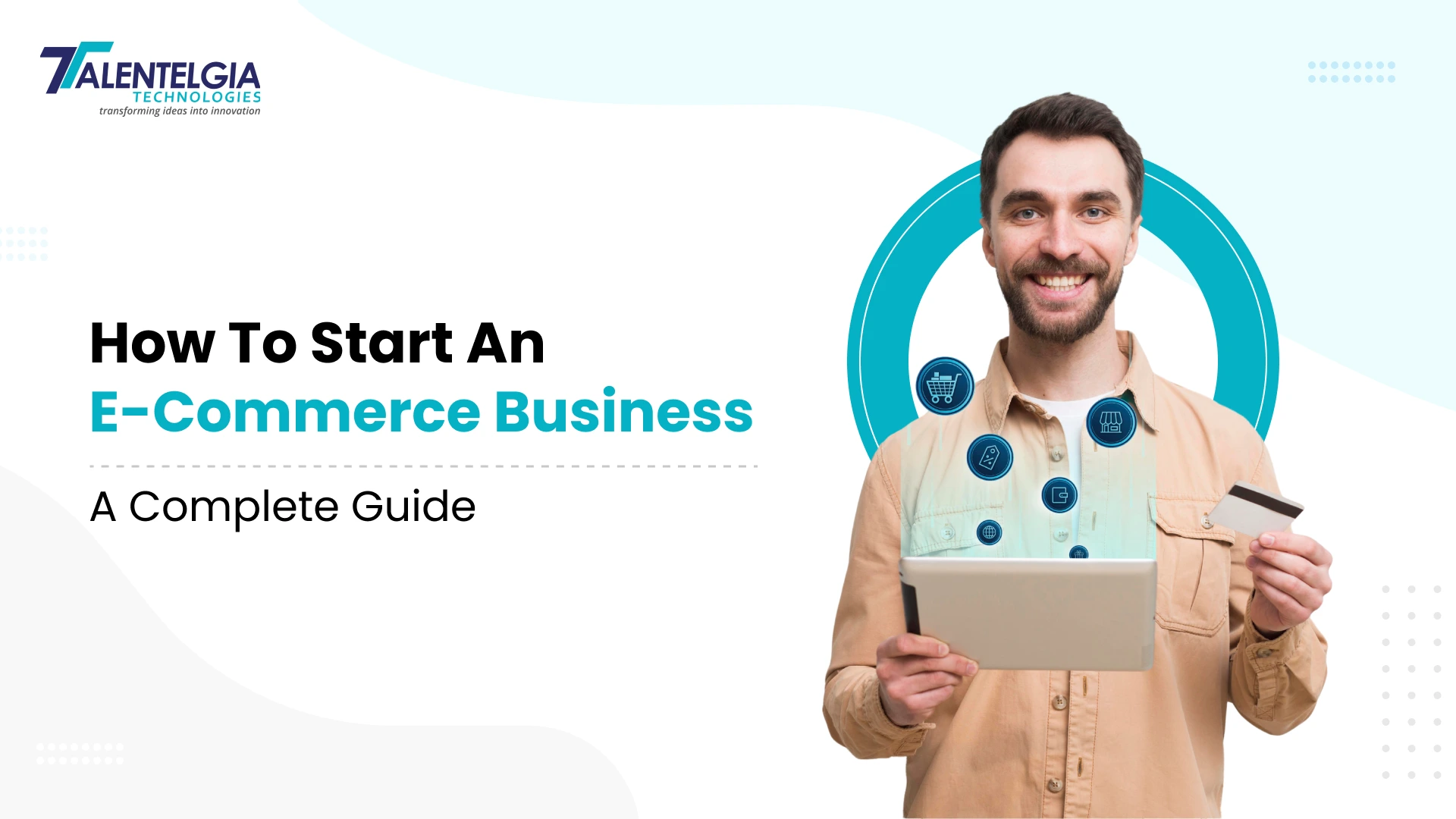

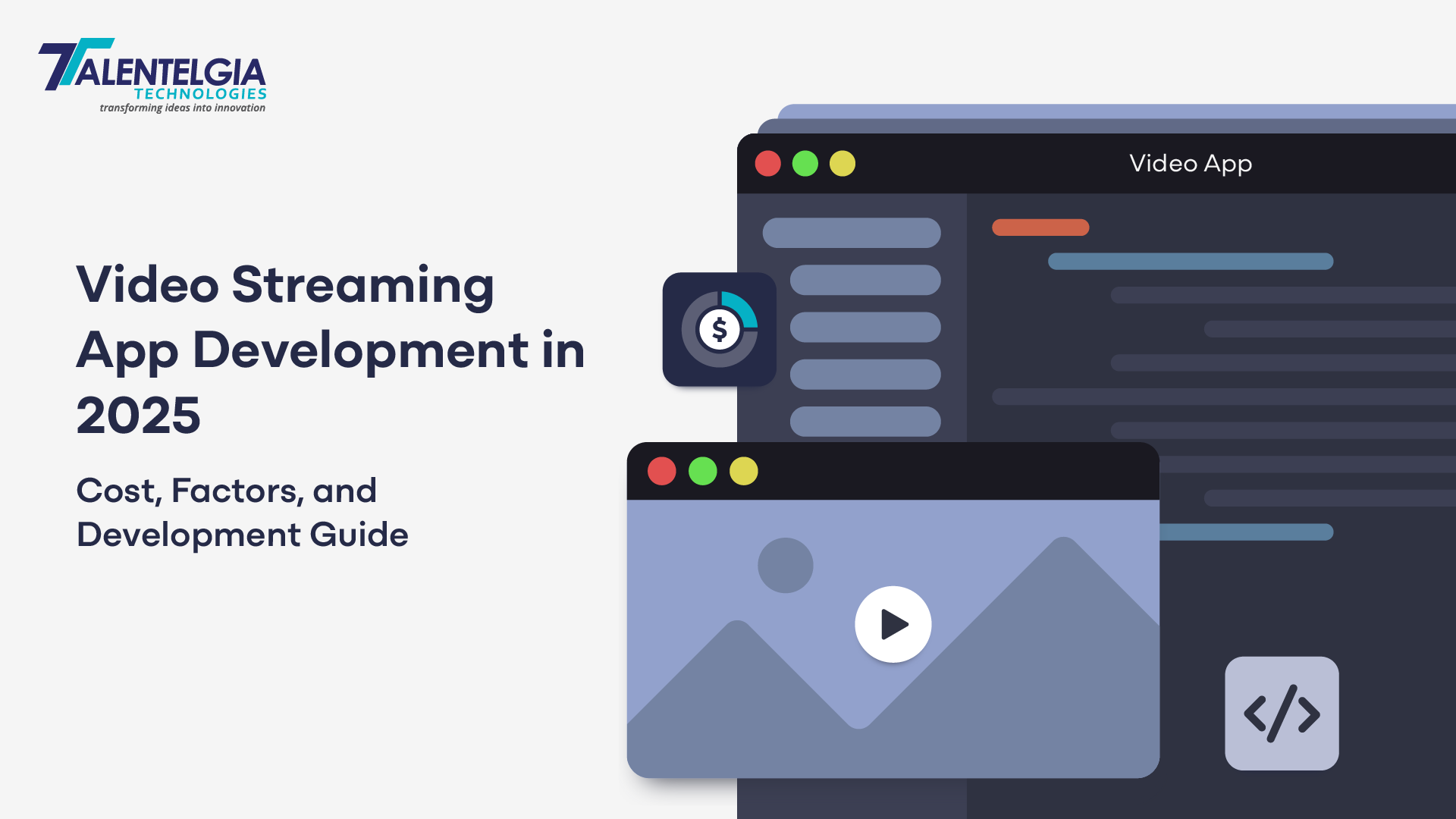
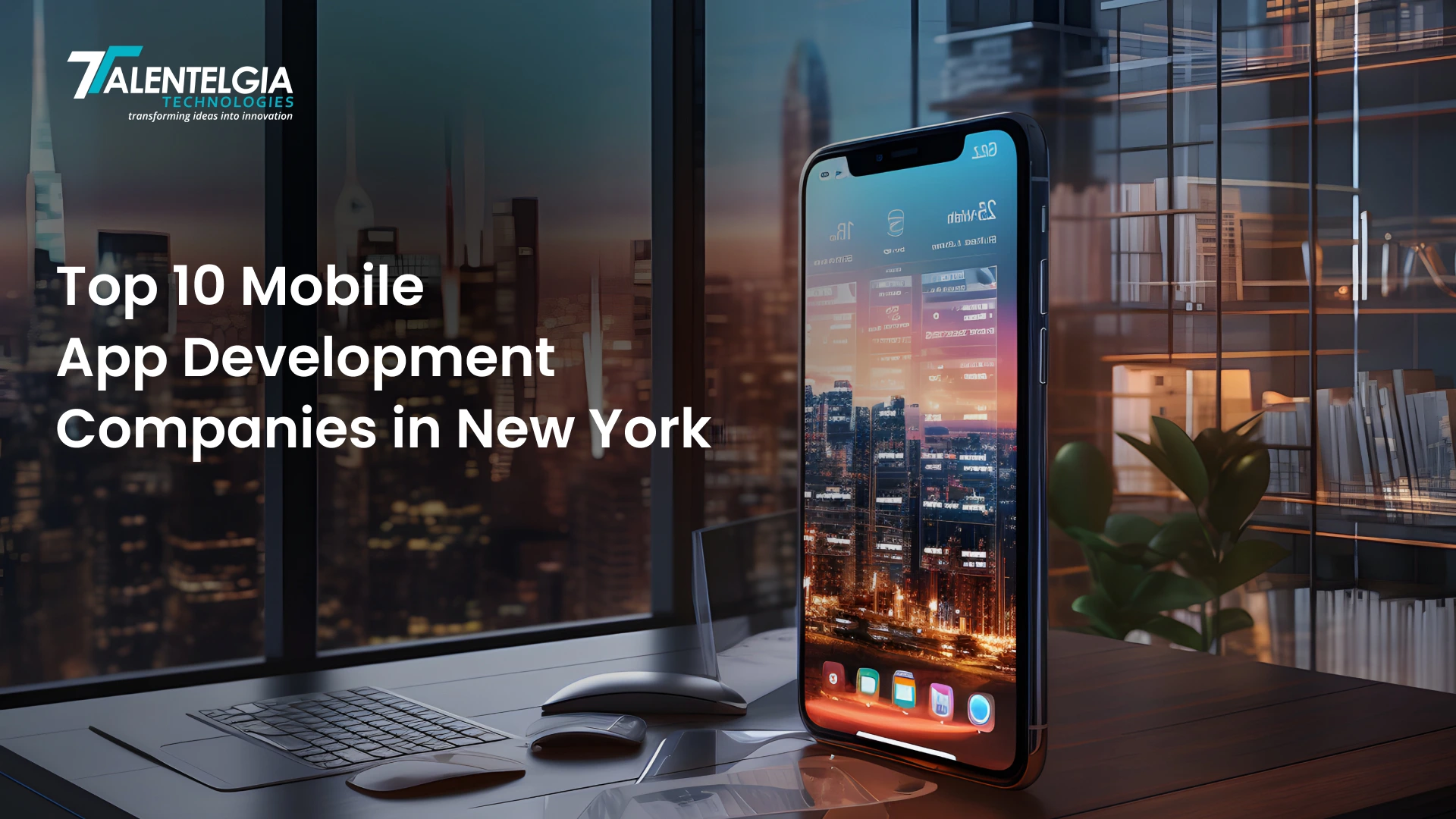










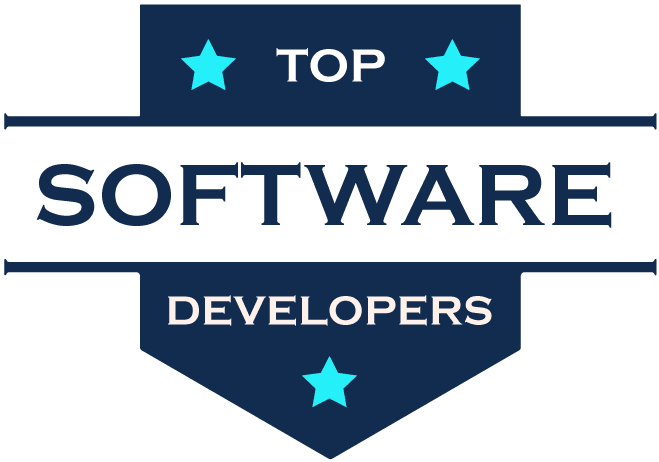
 Write us on:
Write us on:  Business queries:
Business queries:  HR:
HR: 




